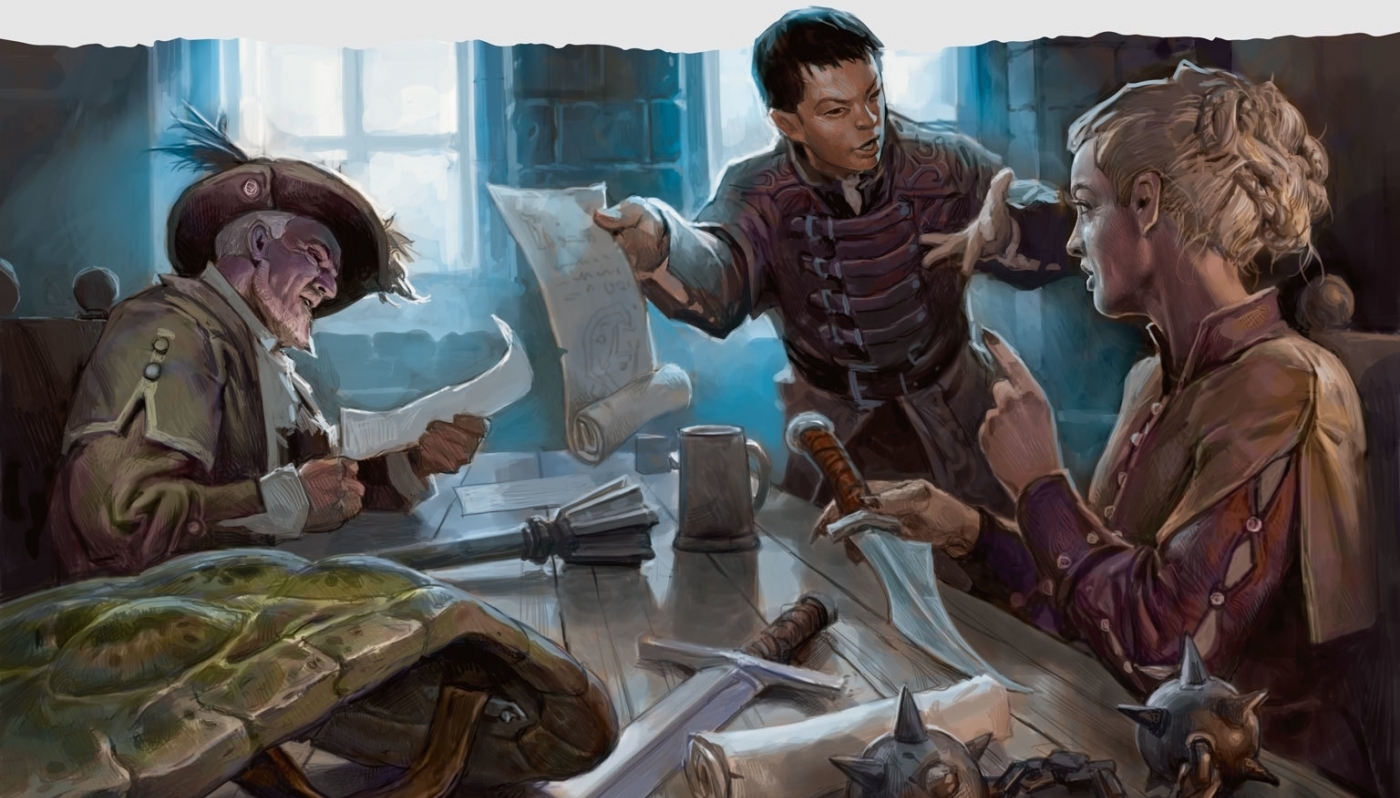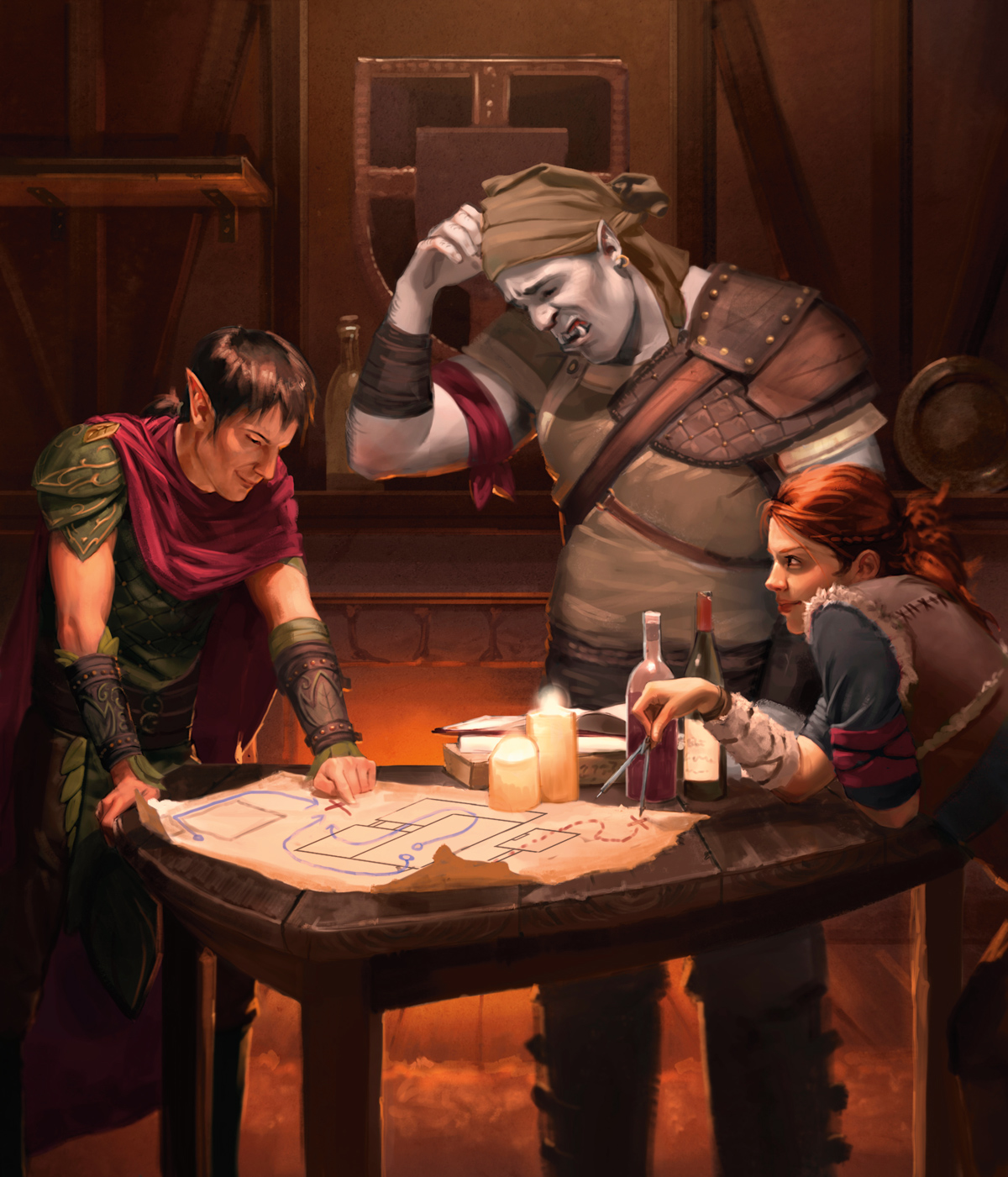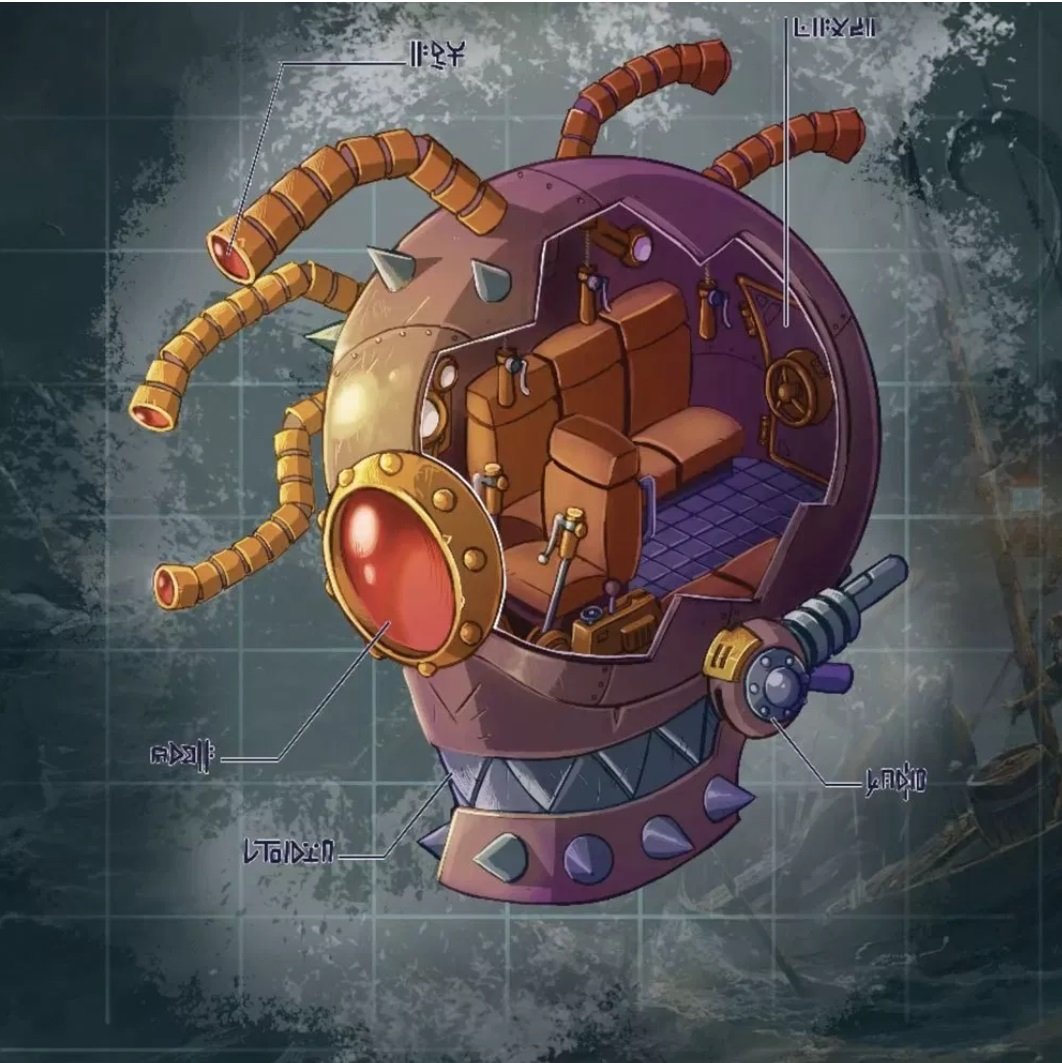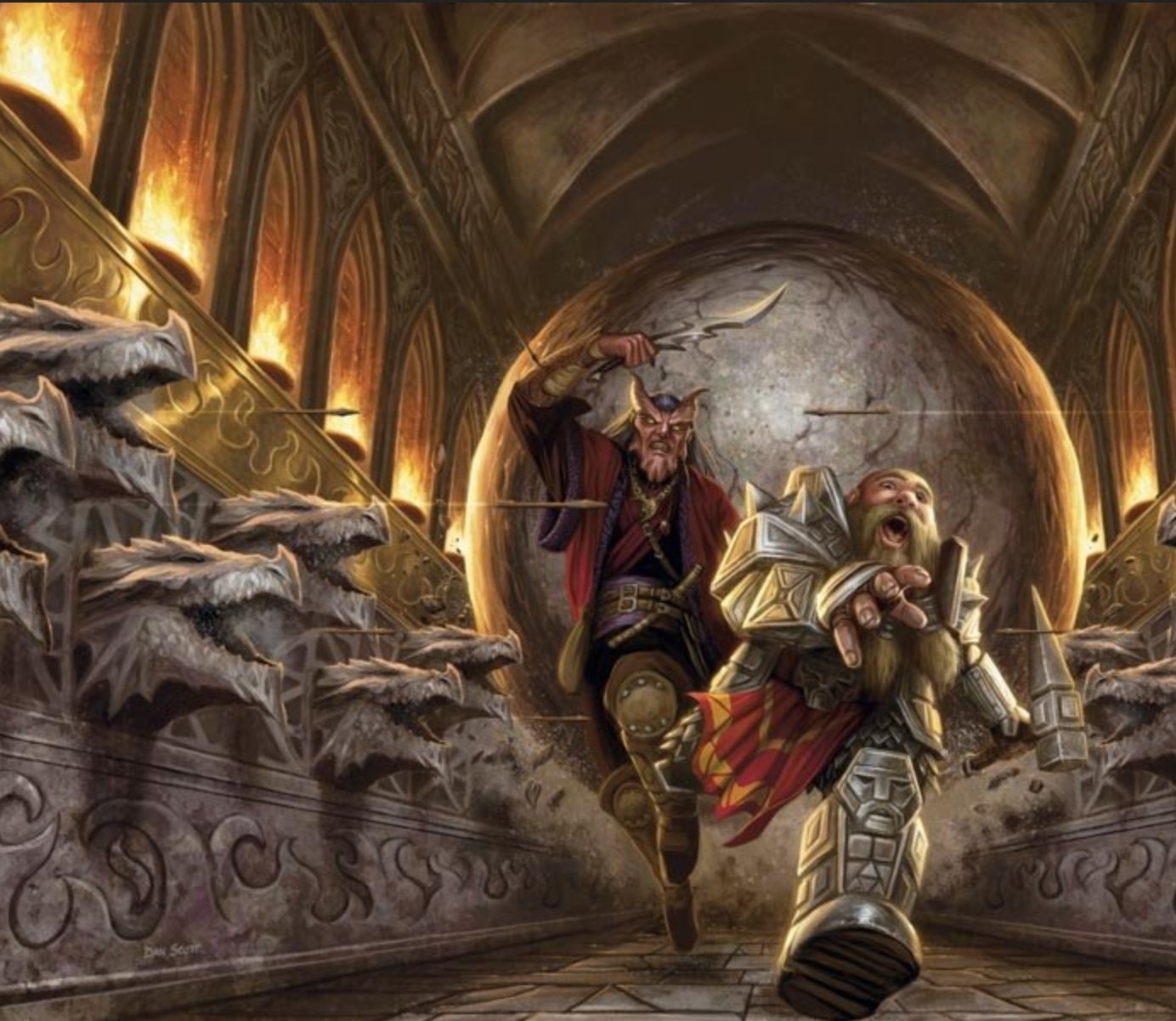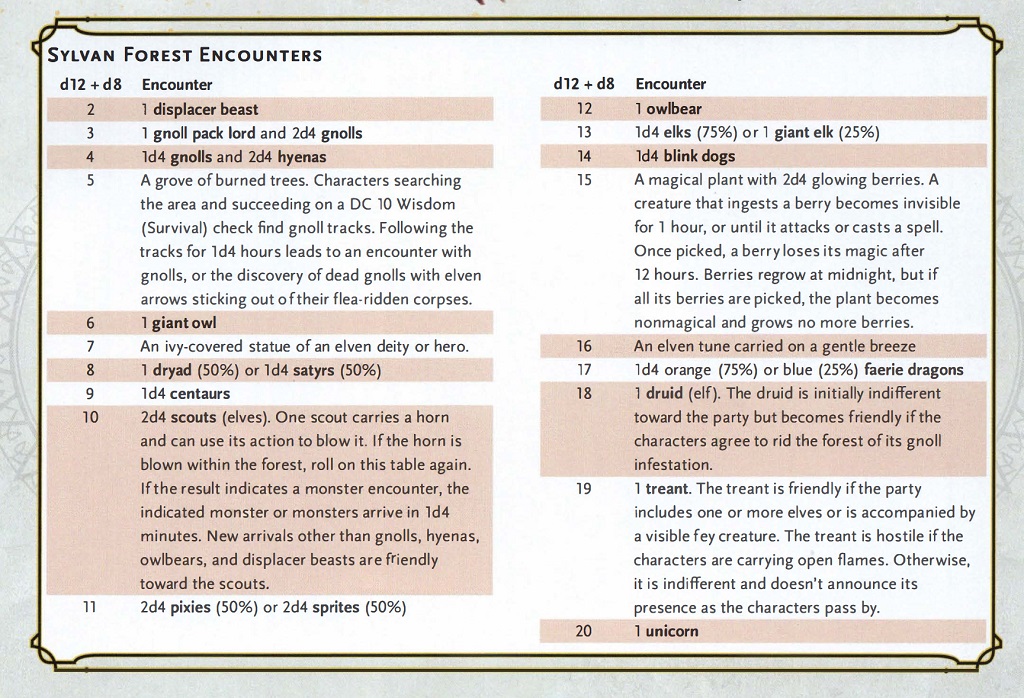D&D: How To DM By The Seat Of Your Pants
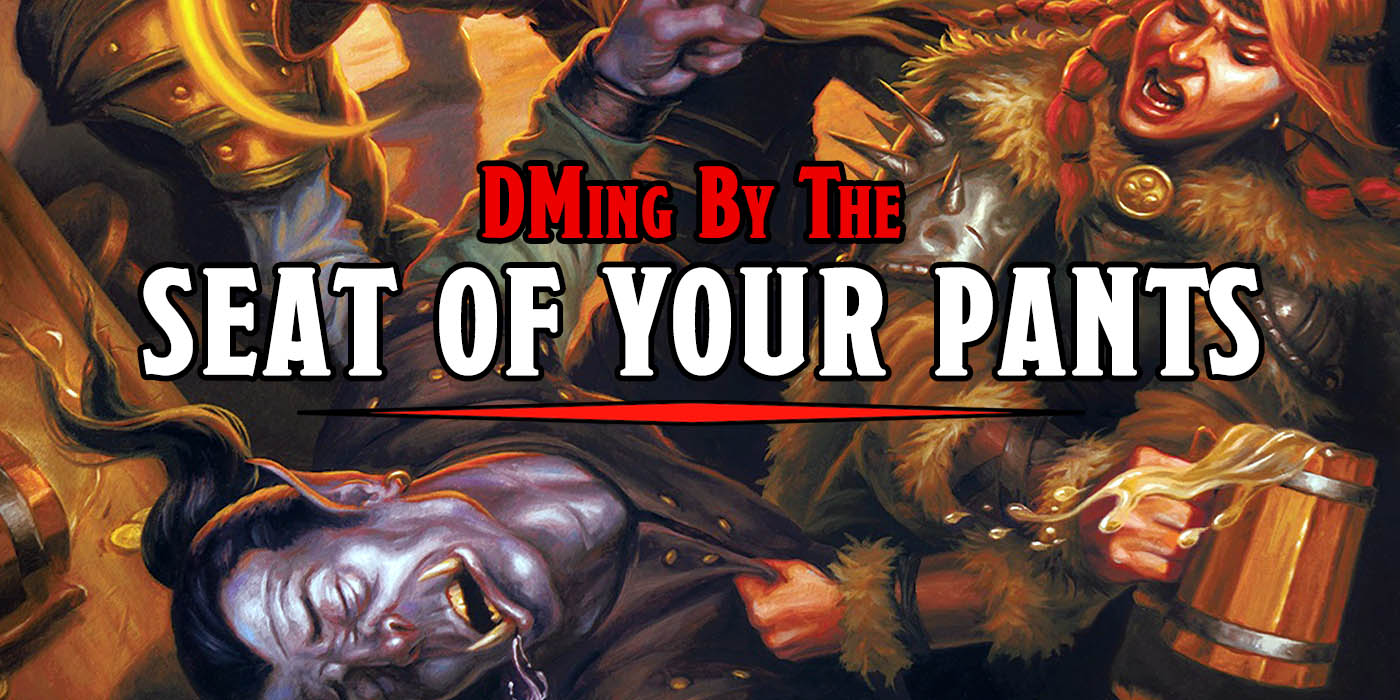
Ever find yourself staring into the abyss when your game goes completely off the rails? Don’t panic, the abyss is staring right back, and it’s improvised.
Four AM is a weird time. It is just past the edge of too late when the body’s natural rhythms have long since abandoned hope that the uncaring organism piloting their finely-tuned machine will ignore the biological ‘low fuel’ light and pull over at the next station to hallucinate wildly while paralyzed for a few hours. It’s also just the other side of too early: decent folk are still asleep, and even the indecent folk are headed bedward for one reason or another, but here you are waking up to start your day hours before there’s even a hint of sun described against the horizon. Four AM is a weird time to do anything, let alone play Dungeons & Dragons.
And yet, in the summer of 2019 that’s exactly why I was in the middle of downtown Austin at 4AM. I was there to run a session of D&D as part of a 48-hour long marathon of improv theatre, benefitting neurodivergent youth. My session was a very-late-in the run “D&D Game” for a group of delirious players, many who had never played D&D before, and die-hard audience, surprisingly full of people looking forward to seeing a game of D&D carried out on stage.
Over the course of the next hour or so we entertained ourselves and the audience. And a big part of that was being prepared to roll with whatever the players had to throw at me. Now, onstage in the middle of sleep-deprived delirium for a crowd is a bit of an extreme situation for D&D–but if I can wing it there, and still have fun, you can toss a player a +2 or -2 modifier the next time something unexpected happens and you’re sitting there wondering what to do next.
It’s surprisingly easy, and we’re going to talk about how you can wing it the next time you’re playing a game, no improv experience required. All you have to do to get started is listen.
Listen, but actively
Take any communication skills class, and the subject of active listening is bound to come up. If you have the luxury of never having to go to mandatory communication workshops, here’s a rundown:
Active listening is all about being present and genuinely listening to what someone else has to say. Not just waiting for the other person to stop talking so you can make a point that flashed in your head because they said a word that reminded you of what happened to you yesterday–but actually just listening to what the other person, or in this case, the other players at the table, are saying.
Now I’m not saying you have to perfectly comprehend and understand everything. Communication is a two-way street, after all, but pay attention enough that you can get an idea of what the other players want to do. If you find yourself lost, just ask them what it is they’re trying. Usually they’ll open up about what their characters are thinking if prompted. Unless they’re being cagey and trying to pull one over on you, the DM (which is a whole other kettle of fish) they’ll likely open up. Most people want to talk about what they’re thinking–they just need a little permission. Ask them something like: “what are you trying to figure out by examining the door” or “what are you hoping this will accomplish” the key is to get not just the action itself, but the hoped for outcome.
Even if they’re not outright telling you with character dialogue, look for cues from the other players. If they’re interested in something, odds are good it seems interesting to them, and figuring out something about it will be satisfying. If they seem bored or uninterested in stopping your big evil villain’s plans, they are also cluing you in that the whole plot is not really working for them. We’ve just spent a hundred or so words saying ‘look for what lights up your players’ but I can’t stress enough how important it is to be present enough to see that. Once you know what they’re interested in though, what can you do?
Let them try something
One of the basic building blocks of any improv is the concept of Yes, And…
And all that means is looking for ways to honor whatever the other people at your table are trying to do. That doesn’t mean ‘letting them succeed at everything no matter what.’ After all, if your players try to kill the queen, that should have consequences–and in a way that’s sort of what they’re asking for.
They want to do something to evoke a response from the world. It’s that same impulse that leads players to spend hours trying to jump over invisible walls in video games, or trying to get to places they can see–they just want to know if they can. And if you anticipated they would.
All it takes is something as simple as letting them try something unexpected and calling for some kind of roll. Matt Mercer has a phrase you can certainly try
Which basically gives the players that tacit permission again. Yes, I did anticipate you’d try this, and I’m ready for you to try it. The key part is to let them try, and figuring out how to honor whatever it is they want to do. If you’re playing D&D, then it’s easy enough–you have a great tool to try anything, just call for a roll. It could be a skill roll, a saving throw, an attack roll, a straight up ability check–it doesn’t matter what you choose, just as long as you choose something.
It can be helpful to keep a cheat sheet handy about what each of the skills does, so you have a better idea of what skill to call for when you need a roll on the fly. I personally tend to go broad–Arcana gets used for an awful lot of things beyond just knowing about magic, for instance. And all I’m doing is asking the player to roll the dice while I figure out what happens on a low number, or what happens on a high number. Speaking of.
Trust your instincts
Being a DM is a little like being a jedi–sometimes you just have to feel the Force flowing around you. What do I mean? Consider the ad-hoc roll. You don’t always have to have a DC in mind when calling for a check. Your first instinct about whether or not something succeeds is probably right.
Similarly, you can just give a player a +2 modifier or a -2 modifier if you feel like they’re particularly suited or not suited to something. You’re already doing this when you hand out Advantage or Disadvantage because that ‘feels right’. If you feel like setting things or adding bonuses, do so.
The look on your friends’ faces when they realize you’re going to let them try whatever nonsense they’re trying to pull is worth it. Then all you have to do is figure out what happens next. But those moments, where nobody really knows what’s coming next–where you haven’t planned the result of the skill challenge, or what lies on the other side of that locked door you didn’t think they’d be interested in–that’s where D&D thrives.
We want to be surprised by our games. We want to feel like we’re discovering the story together–and it can be a little scary to go far from what you’ve prepped. But your instincts are there. We’re all natural storytellers. Maybe there’s a clue behind the door, or one of the encounters you had prepared earlier. If you really want to wing it, a great way is to prep some random encounter tables ahead of time and roll anytime your players start poking around. There’s already pages full of them in the DMG, and a guide to making your own starting on page 85. Once you figure out what’s there, you just have to make it make sense.
The best part is, it doesn’t have to make sense right away. You just have to keep thinking about it for a while, and you’ll either come up with some reasoning for it–or your players will–and then you can justify it after the fact. If they open up a door and find a plant, there’s clearly something magical happening there. Once you know what you can decide why and that’s a whole lot easier.
The takeaway from it all is this: the next time you game, let the players run a little wild. Once you’re off the map, you’d be surprised by what you discover together.
These are just some quick methods you can try to wing it a little more in your games. What’s your favorite trick for adapting to what players are trying to do on the fly? Let us know in the comments! Happy Adventuring!

